Two James Spirits
Sinegal Estate
Reserve Cabernet Sauvignon Blend 2016
Of the Napa wines I tasted over 4 days on this trip, the 16 Sinegal Reserve & the 13 Seavey Cabernet were my favorites. Both great wines but, stylistically very different. The Seavy big and bold and the Sinegal pure beauty & elegance.
The nose reveals very dark currants. Dark & milk chocolate. Blackberries, creamy black raspberries, black plum & plum, mocha powder, core of anise, beautiful dark spice, soft volcanic soils, some dry brush and lavender, violets and fresh dark red florals.
The body is full. The tannins are really meaty but, exceptionally soft, fine and meaty. Lots of dark spice with plenty of heat. The mouthfeel is gorgeously sexy with feminine elegance. Dark & milk chocolate. Blackberries, creamy black raspberries, black plum & plum, mocha powder, core of anise, beautiful dark spice, big sweet tarry notes, soft volcanic soils, some dry brush, lavender, violets and fresh dark red florals. The acidity is perfect. The finish is well balanced sexy and gorgeous. The structure, tension say this needs to cellar eight to ten years.
Photos of; tasting cellar area, modern stainless tanks, outside terrace tasting and or dining area and their grounds and lake.
Producer history and notes...Sinegal Estate was founded in 2013 with wines made from their 30 acre Inglewood estate in St Helena (not to be confused with the Inglenook Estate in Rutherford). This is not a new property, it was part of an original land grant and its more modern day history dates back to 1879 when owner Alton Williams purchased the property and planted the first vines in 1881.
The property has changed owners a number of times over the decades. At one point the Jaegers’ owned the estate, Bill Jaeger and his wife Lila lived here. These Napa Valley pioneers were in part responsible for helping establish Freemark Abbey and Rutherford Hill. Lila was also a gardener and established beautiful gardens on the property.
Owners, David (father)and James (son) Sinegal purchased the property in 2013. James was the co-founder of Costco and once CEO. David worked at Costco for 21 years.
After the purchase, David divided each of their vineyards into smaller blocks, picking selectively (30 times in 2013) rather than all at once, and adding technology to the vineyards so they have up to the date reports on a number of data points including temperatures, soil moisture and various barometric pressures. If they want to selectively water, say vine #67 in row number three, they can do so with their irrigation system. Extremely efficient!
Nine acres of vines are planted to various red varietals including; Cabernet Sauvignon, Cabernet Franc, Malbec and Petit Verdot. They have some of the older Cabernet Franc vines in the valley that are 30+ years old.
The soils here are diverse and can vary even within small geographic ranges on the property. Some of their vineyards are planted on the valley floor – while their upper vineyards are hillside, on the edges of the Mayacamas Mountains.
Their landscape above the property is interesting and part of the Mayacamas Mountains. Visually, it appears drier than other parts of this mountain range and the vegetation reflects that with grey pine and more open natural vegetation rather than the thicker wooded vegetation more commonly associated with parts of Spring and Diamond Mountains to the north.
After purchasing the property, David created planned and laid out his vision to create a world-class boutique wine making operation. Many wineries in the Napa Valley can take years before they come to fruition, not so here. After only about 10 months, the existing winery was remodeled. 6,500 feet of caves were expanded and drilled into the hillside behind the winery and a new hospitality center was built. The hospitality center ties in very well with the winery. From the small tasting room, large doors open revealing the tanks.
A vegetable garden slightly under an acre grows just south of the winery building. Vegetables from this garden are sold to nearby restaurants.
A skeleton key appears on the labels of their wine and is prominently displayed on the outside of their winery building. This has historical significance. The original key opens the front door to the historic home on site and is displayed in the tasting room. With respect to the history of this property, this one key has already become iconic to the brand.
You only need to look inside of the winery to see that their wine making team is focused on quality. Each of the small lot tanks have built in pumps which can be controlled and programmed to do pump-overs anytime of the day or night. In addition, these tanks have multiple points at which the temperature can be controlled. These tanks do not necessarily handle all their fermentation’s. They also ferment small lots in puncheons and barrels as needed. Control across the board is the key here and it is the control of the details in wine making that is is so integral from when the fruit first arrives through to when it is bottled.
2013 was their inaugural release. The focus is currently on two primary varietals, Sauvignon Blanc and Cabernet Sauvignon. The 2013 Sauvignon Blanc were sourced from the estate but, then it was determined it was growing in an area better suited for red varietals so it was torn up and new plantings were made in the back of the property. While not far from these original plantings, their new home for their Sauvignon Blanc features different soils and is growing in a cooler part of the property.
The wine making team has been experimenting with the style of this varietal since 2013 with subsequent vintages seeing more oak. Especially, using the slightly longer cigar shaped barrels , which have extra surface area for maximizing complexities including textural feel imparted from aging the wine on the lees in these particular barrels. Maceration on the red wines is often 8-10 days and sometimes up to 20 days.
Most of their sales are direct to visitors or through their mailing list. However, they do have some distribution outside California in Florida, New York and Washington. Primarily to restaurants. — 7 years ago

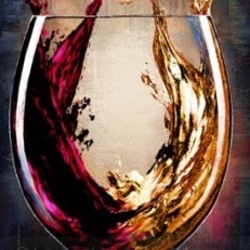
Flora Springs
Trilogy Napa Valley Cabernet Sauvignon Blend 1993
They should have called the Winery Floral Springs based on the nose. Beautiful; blackberry, black raspberries, dark cherries, strawberries, dry cranberries and plum floral fruits. Nice spice, vanilla, touch of clove & cinnamon, used leather, dark rich soil, crushed volcanic minerals, black fruit tea, black raspberry cola and dark fresh florals with violets. The tannins are 95% resolved. The body is lush & ripe. The length, tension & structure are nearing the end. Just a few years left of being worthwhile. However, the balance is stereo tuned. The fruit on the palate shows even more elegant & ripe floral fruits than the nose. Blackberry, black raspberries, dark cherries, strawberries, dry cranberries and plum floral fruits. Nice spice, vanilla, light clove & cinnamon, used leather, dark rich soil, crushed volcanic minerals, black fruit tea, black raspberry cola and dark fresh florals with violets for days. The acidity is like a waterfall. The beautiful, long, elegant finish is a little lean yet has a nice richness. Beautiful wine that just missed 9.2. Photos top to bottom and left to right. The Winery; which is separate from the other tasting room only on Hwy 29. The tasting room on Hwy 29 in St. Helena, Flora Spring caves and the front of their tasting room along Hwy 29. Producer notes and history...the stone winery on the grounds were built in 1885 by two immigrant brothers from Scotland, James and William Rennie. They were in construction, built the winery and planted 60 acres of grapes. The brothers had some bad fortune when phylloxera consumed the vines, and then a fire in 1900 destroyed their wine press and cooperage. In 1904, they sold the winery and fifteen years later Prohibition started. The winery was then closed until 1933. That year, Louis Martini, looked into their magic eight-ball and saw Prohibition collapsing and bought the Rennie property. They built a new stone house and also made a reserve wine from the hillside vineyards. However, the old winery remained empty until the Komes family bought the property, 325 acres, the old farm house, the newer stone house and 60 acres of vineyards. The son thought he’d persuade his dad to restore the old winery and proposed to call it Chateau Jerome. Although it had been designed by Hamden McIntyre an architect of several other classic 19th-century Napa wineries, by 1977, the place was a wreck. The tin roof of the building had so many holes in it. They called it the starlight roof. His father looked at it and stated, “I’ve worked all my life for my good name. I don’t want to squander it now.” John’s mother, Flora, however, sided with her son on the potential of the property. Carrie Komes suggested they could name the winery for her mother-in-law. Combined with the abundant springs on the land, they decided the name would be Flora Springs. It was a sure way to their mom’s heart and father’s wallet. Komes put his construction expertise to work on renovating the old winery, which still had scorch marks on the walls. So skeptical was his father about his son’s wine-making project, they divided the winery building. John rented half where he put his first fermenting tank, which he named R2D2. He invited a couple of friends from his wine-making class to help make wine at the new place. He also hired Mary Ann Graf, who in 1965 had been the first woman to graduate from the viticulture and enology department at UC Davis to help manage the project. She told John, “if you don’t hire a winemaker, I’ll quit.” He did and the 1979 Flora Springs chardonnay won a gold medal at the Los Angeles County Fair. In those days, it was fairs, not ratings. This was his first lesson in marketing as they sadly sold all the wine before they won the medal. Fairs were the big news instead of ratings as Parker had not yet risen to fame as he was the only one to call the grand 1982 Bordeaux vintage correctly. They submitted their 1981 Cabernet to eight fairs and won seven gold medals. From there, the winery just kept growing. They were the 67th winery in the county. Over the years, they had their ups and downs, but kept growing. One of their highlights was the creation this wine, Trilogy. It was one of the first Meritage blends in the valley. By 1984, they planted all the Bordeaux varietals; Malbec, Merlot, Cab Franc, Cabernet Sauvignon and Petit Verdot. They wanted to create a blend “by taste”, not by formula for a nice smooth wine that goes deep into the palate. They worked with a little of this and little of that. The first Trilogy was Cabernet Sauvignon, Merlot and Cab Franc. It was dubbed as velvet in the mouth. A lot of what they do is taming the tannins. One man who bought Trilogy by the case said, “it’s the only red wine his wife would drink young.” From the leftovers, they began making single-varietal estate wines. Another highlight was the discovery of a unique clone of Sauvignon Blanc in vineyards his father bought in Oakville. UC Davis could identify nothing like it in their vast library of clones. They were a bit ahead of the times, but this clone showed Flora Springs how different in that time period what Sauvignon Blanc could be like as it took all the grassiness out of Sauvignon Blanc. — 8 years ago



Eric Kent Wine Cellars
Label Artist Yellena James Rosé 2016
Leave it open for an hour or two and tastes more like a light Pinot than a rose. — 8 years ago
Viña Indómita
Duette Premium Valle de Maipo Cabernet Sauvignon Carmenère
Absolutely one of the best Cab Sauv's I've tasted. Subtle yet strong. I dont trust the point system byt I have to agree with the 91 points it earned from Wine and Spirits mag, and whoever James Suckling is. — 9 years ago
James Cole
Umbral Estate Reserve Napa Valley Cabernet Sauvignon 2010
One of favorite boutique Napa winery - decanted 2 hours - love the 09, 10 and 12 - not tried the 13 yet - singing in prefect pitch - color is deep red and stunning, smell is intoxicating, taste is with every sip reminding me to smile and the finish is damn right runway model sexy - in honor of @Carl Fischer and the amazing Christmas carol story last night and as a tribute to all delectable folks including the WNH gang - my 2nd seasonal posting is an adaption from Home Alone 2 - "hold it right there - and you respond by saying "this is wine drinkers everywhere" - I say knew it was you as I could smell you near my cellar - you were at my cellar last night and You been drinking with everybody and not always smiling - you been drinking with "Snuffy. Al. Leo. Moe, with the gimpy leg. Cheeks. Boney Bob, Cliff" - you say "I am mistaken and have been not drinking with everybody and when you drink your wine you do smile" - so I say I believe you but tommy gun don't so I going to give to the count of three to pour a glass of wine and start smiling one two and wait you are smiling so keep smiling and Merry Christmas you wine drinking animals!!!! — 9 years ago
Two Hands
Zippy's Block Roennfeldt Road Marananga Shiraz 2007
20060302 Cru w25062w to w24462w
Drank 20170101
Pair with Vietnamese pork, butter lettuce, Spain 5j ham cubes, truffle cheese, black olive, beef ri.
Nose: from little to rich plum and licorice
Taste: from little to rich plum and licorice, dark plum, yummy. Licorice comes out in an hour and accompanies well.
Color: dark
Good after 1 hour, finally finish in 2 hours, good
The 2007 Zippy's Block Shiraz is a sound effort indeed and displays the characteristics of a premium Barossa Valley red. Two Hands Wines have created a single vineyard series, of which Zippy's Block Shiraz is a major player, and this particular vintage, although tough, still resulted in a top notch wine.
EXPERT REVIEWS
Robert Parker's Wine Advocate - 93 pts - The 2007 Shiraz Zippy's Block from Roennfeldt Road in the Marananga sub region of Barossa Valley, is a brooding, burly wine with a splendid nose of plum, tar, licorice, smoke, game, and blueberry. On the palate it is surprisingly restrained, bordering on elegant. Savory, ripe, and medium-long, it will be approachable in 1-2 years and drink well for a decade thereafter. - Dec 2009
James Halliday's Wine Companion - 92 pts - More life here, with some red fruit providing lift to the concentrated fruitcake and chocolate beneath; the oak and fruit work in tandem and provide a rich, but not overwhelming level of interest on the finish; chewy with some nerve to conclude. Date tasted 26 Feb 2009, drink by 2020.
Wine Spectator - 91 pts - This spicy red is distinctive for its star anise and cigar box overtones around a plump, chewy core of blackberry, plum and dried blueberry flavors, persisting through a solid frame of fine tannins. Best from 2011 through 2019. 750 cases made. -HS, Oct 2009 — 10 years ago
Blackstone Winery
Winemaker's Select California Cabernet Sauvignon 2011
Two for $14 at ABC Fine Wine and Spirits. Second only too Oak Grove. — 12 years ago
Saxum Vineyards
James Berry Vineyard Red Rhône Blend 2008
Two spectacular wines in a row! — 12 years ago
Sullivan Vineyards
Reserve James O'Neil Rutherford Cabernet Sauvignon 2010


Allegro Winery
Punk Pennsylvania Catawba Sweet Rosé
Allegro Winery
Punk
PA Rose` wine
Produced and bottled by Allegro Winery
Brogue, PA 17309
717-927-9148
www.allegrowines.com
**My new favorite obsession. Local PA wine. I searched PA Wine and Spirits stores high and low for this wine and no dice. Tracked it down at Wegmans (grocery store) in Williamsport, PAin June of 2018. Worth the wait! I bought two bottles to bring back to the Burgh with me! Quite sweet and had beautiful coloring. — 8 years ago
Tobin James
Fat Boy Paso Robles Zinfandel 2011
Very jammy and clear cherry flavors. May have let it sit a bit too long. Drank the 2011 vintage from the 2014 shipment in feb 2018. Wish I drank it a year or two sooner. But glad I didn’t wait any longer. fat boy is still a great zin. — 8 years ago
Bollinger
Brut Rosé Champagne Blend
On the nose; bright cherries, ripe strawberry & cranberry reduction, black raspberries, raspberries, watermelon near the rhine, mixed orange citrus, oyster shells, baguette crust, understated volcanic minerals, chalk, saline, fresh pink roses and florals. The body is full and a shade gluey. The fruits are ripe, rich and candied/gummy in style. Bright cherries, black cherries ripe strawberry & cranberry reduction, black raspberries, raspberries, watermelon near the rhine, mixed orange citrus spray, saline, seashells, soft grey volcanic minerals, lots of grippy powdery razor sharp chalkiness, baguette crust, fresh pink roses & florals, acidity that is round and well done, understated delicate micro bubbles and a long, well balanced, rich finish. The reason why I prefer the Billecart Salmon, Ruinart & Laurent Perrier over the Bollinger is it’s a little too sweet for me. Photos of; the House of Bollinger, cellar, headstone that marks one of their vineyards and their harvest staff picking perfectly manicured rows. Producer notes and history...Bollinger has roots dating back to 1585 when the Hennequins, one of the Bollinger founding families, owned land in Cramant. Before the Bollinger house was founded in the 18th century, the Villermont family practised wine making, though not under their family name. In 1750, Villermont settled at 16 rue Jules Lobet, which would eventually become the head office for Bollinger. In 1803 Jacques Joseph Placide Bollinger was born in Ellwangen, in the kingdom of Württemberg. In 1822, he moved to Champagne and found work at the house of Muller Ruinart, which no longer exists. Many other Germans came to settle in the Champagne region, including Johann-Josef Krug and the Heidsiecks, who founded a house that would become; Charles Heidsieck, Piper Heidsieck, Veuve Clicquot and others. The Champagne house Renaudin Bollinger was founded in 1829 in Aÿ by Hennequin de Villermont, Paul Levieux Renaudin and Jacques Bollinger. The partners agreed that the Villermont name would not be used on the labels, hence the house name Renaudin Bollinger. Starting when Jacques Bollinger married Charlotte de Villermont, the house has been managed by the Bollinger family. Even though Paul Renaudin passed without an heir to his name, the label did not become solely Bollinger until the 1960s. Founder Jacques Joseph Bollinger married Charlotte de Villermont. The had a daughter, who had two sons Joseph and Georges. These sons took over the company in 1885 and began expanding the family estate by purchasing vineyards in nearby villages. The sons also developed the image of the brand, such as when Bollinger became the official supplier to the British court and received a Royal Warrant in 1884 from Queen Victoria. In 1918, Jacques Bollinger, the son of Georges, took over the company and married Emily Law de Lauriston Boubers, known as "Lily". Jacques expanded the facilities by building new cellars, purchasing the Tauxières vineyards, and acquiring the assets of another Champagne house on Boulevard du Maréchal de Lattre de Tassign, where Bollinger's offices are presently located. When Jacques Bollinger died in 1941, Lily Bollinger took over. Lilly expanded production with the purchase of even more vineyards, but is best known for traveling the world to market the brand. Bollinger was modernized under the Claude d'Hautefeuille, who acquired additional vineyards and further developed the brand internationally. Following Claude, his cousin Christian Bizot took over the Bollinger house and expanded world distribution. Their Winemaker also used several James Bond film movies to market the brand. Bollinger is fermented in oak barrels. At harvest, only the first pressing is used in the cuvée, unless the vintage is of particularly high quality, when a second pressing of Chardonnay will be used. Bollinger sells the second pressing, the tailles. Bollinger utilizes two pressing houses (Louvois and Mareuil sur Aÿ) to ensure a short distance between harvest location and pressing. When possible, grapes purchased from growers are pressed by the house. When the pressed wine arrives, the Bollinger cellar master analyzes the musts for quality, discarding and selling off those that do not meet the house standards. The first fermentation is done cru by cru, variety by variety, preserving many of the unique characteristics of the vines location. Bollinger is one of the few Champagne houses to do some first fermentation in oak barrels. Wines that will not hold up to first fermentation in wood are vinified in vats. Bollinger Champagnes usually undergo malolactic fermentation. The Grande Année 1995 did not undergo malolactic fermentation. Bollinger uses only traditional yeast. They’ve decided that new generations of yeasts (agglomerated yeasts and encapsulated yeasts) do not produce satisfactory Champagne. Vintage wine, including all wine to be used in a Grande Année, is fermented in small oak barrels, sorted according to origin and variety. Both oak and stainless steel are used for non-vintage wine. Bollinger also has the last Cooperage in Champagne. The oak barrels are all at least four years old, avoiding the transfer of tannins to the wine. The wines are only lightly filtered. All Bollinger Champagne spends a long time on its lees, contributing to the complex flavour of the wine. Though appellation d'origine contrôlée rules only require 12 months on lees for non-vintage Champagne and for vintage (NV wines, 15 months from tirage to release and vintage wines must be kept for 36 months from tirage to release), Bollinger ages their non-vintage wines three years, and the vintage wines from five to eight years. The Grande Année and R.D. Champagnes are riddled by hand. At disgorgement, Bollinger wines are given a low dosage, to maintain the balance and flavor of the wine. The company uses 6-9 grams of sugar per liter for the Special Cuvée and La Grande Année. The extra-brut R.D. is dosed between 4 and 5 grams. After dosage, the wines are aged an additional several months, resting for a minimum of three months before shipping. Bollinger owns nearly 160 hectares of vines, producing more than 60% of its supply. The vines are largely Pinot Noir, specifically clone 386. Bollinger believes this clone ensures good quality as well as highlighting characteristics of the various terroirs. The vineyards also include some rare ungrafted French vines from before the phylloxera. Bollinger owns vines all over Champagne, including the crus of Aÿ, Bouzy and Verzenay. — 8 years ago

I figured a real keyboard needed to be involved, thanks for the insight.

Dirty & Rowdy
Familiar California Mourvedre 2015
There's something to be said about the state of the US wine industry when two wine and food bloggers in Atlanta can leave everything behind for California to start a winery that specializes in producing an inverse version of Mourvèdre. I'm sure that anyone making wine in California if asked where these guys would be after six years would unanimously say they'd be lucky to still be doing it. And certainly wouldn't say they'd be making the cover Wine & Spirits.
There's no doubt this is carbonic from the second the cork is pulled. As long as you're not pouring for Master Somms, everyone will assume this is Beaujolais. Juicy plum and mixed berry meet pungent violet, wet gravel, thyme, and a full rack of spices. The dark side of Mourvèdre seeps through over the hours, and in a wave of panic you'll realize you're not drinking Beaujolais, like realizing you're on the wrong plane during take off. In one moment you're mindlessly flipping through the pages of an airline magazine, and in the next you're fully aware of the adventure that awaits. — 9 years ago
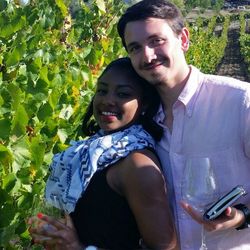

Comte Armand
Clos des Epeneaux Monopole Pommard 1er Cru Pinot Noir 2001
The last of three bottles I got my hands on thanks to Flatiron Wine & Spirits! About two years since I'd had it last and with a similar white truffle celebration. Lovely Côte de Beaune red. Opened ~20 minutes before serving to get a little air. Served at the tail end of the white truffles and simple pasta and throughout the roasted duck breast course. seemed to lack the punch both on nose and palate of last time, but may be because we served it after the Barolo and Barbaresco. — 9 years ago
Don Felix
Añejo Tequila de Agave
extraordinary, limited edition añejo was created as a gift from a loving family to its patriarch, Don Felix Bañuelos, one of the pioneers of the reposado expression and creator of Hacienda Vieja Reposado and Cazadores Tequila.
Introduced in 2011, Don Felix Añejo is handcrafted at Destiladora de Los Altos [NOM 1412] in Arandas. Every step of production is slow and deliberate from roasting the agaves to patiently fermenting the sugar-rich juice of the agaves. After being twice distilled, the tequila is matured for two years and eight months in virgin American white oak.
Be prepared to be impressed. During its stay in oak, Don Felix Añejo develops an enticing bouquet and a lavish palate of cinnamon, honey, vanilla and baked agave. The lip-smacking flavors persist an amazingly long time.
“Don Felix’s commitment to the quality of the distillate led us to create the tagline, ‘not all 100% agave is created equal,’” explains Monique Huston, national spirits education ambassador for importer Marsalle Company. — 9 years ago
Two James Spirits
Grass Widow Bourbon
Great #Detroit bourbon. Amazing value for the profile — 11 years ago
Château de Saint-Cosme
Little James' Basket Press Vin de Pays d'Oc Viognier Sauvignon Blanc
Enjoyed this bottle after a long day while watching the first two parts (of ten) of Band of Brothers. Was quite good! I wasn't sure what kind of wine it was since the bottle doesn't say, so it was surprisingly great. — 12 years ago
Château Le Pavillon de Boyrein
Graves Red Bordeaux Blend 2010
Two days before my wedding. Drinking with James. Delicious. — 12 years ago
Marcus James
Mendoza Merlot
Great value, special at wine & spirits. Smooth finish. — 13 years ago
Viña Almaviva S.A.
Almaviva Puente Alto Red Blend 2015
The Almaviva journey continues. 2015 this time with a huge 100 point James Suckling score to live up to. Planned to drink over two days to see what happened. Upon opening, it’s completely closed, almost hard to discern any real aromas but after two hours it starts to come to life. Blackcurrant, mushroom and vanilla with some darker flavors of chocolate and a slight green pepper. Very dry but great depth which just needs time. Day two there is a nice added sweetness and it’s much smoother with less drying tannins. I can’t score it 10 or 100 because I’m not clever enough to know where it goes but for now this is another great Almaviva which I have no doubt will achieve its full potential when I have more grey hair. — 7 years ago
James Cole
Napa Valley Malbec
Enjoying this wine from Bob & Melissa. Sitting with my two sisters. Beckie & Eileen 🍷 — 7 years ago
Château Lafite Rothschild
Carruades de Lafite Pauillac Red Bordeaux Blend 2003
On the nose, ripe; blackberries, sweet & sour dark cherries, cooked cherries & strawberries & hues of blueberries. Black tea, cola, soft baking spices; vanilla, light clove & cinnamon. Crushed rocks, stones, limestone, turned, moist black earth, tobacco leaf, saddle-wood, soft leather, dry & fresh dark red florals.
The body is medium edging toward full. The tannins pretty well resolved. The ripe fruits show the hot, ripe vintage. Blackberries, sweet & sour dark cherries, cooked cherries & strawberries & hues of blueberries black tea, cola, soft baking spices; vanilla, light clove & cinnamon. Crushed rocks, stones, limestone, tobacco with ash, some graphite, soft medium dark spice, turned, forest floor, powdery but edgy minerals, saddle-wood, soft leather, dry & fresh dark red florals with some violets on the finish.
This showed better with Ribeye. The Ribeye brought out a fuller, richer wine with even more complexity. 9.35-9.4 with the Ribeye. It just missed 9.2 on its own. It’s big brother the 03 “Lafite” is 💯 point Parker wine.
Photos of; Chateau Lafite, their oak vat fermenters, Estate wine and their magnificent barrel room.
Interesting history and producers notes...Lafite Rothschild has a long and interesting history dating back to 1234, even though the property was not in the Bordeaux wine business at that time.
It is has been largely believed that vines were already planted on their terroir. The owner of the estate at the time, Gombaud de Lafite left his mark, his name. Almost 1,000 years after he owned it, the Chateau is still named after him! The vines were probably in existence at Lafite for over a century, it was not until around 1680, the majority of vineyards of what we know of as Lafite Rothschild today were created. This is because on the 1680 estate manifest, there are six mentions of their Bordeaux vineyards. Jacques de Segur, earns credit for cultivating the vineyard as I wrote in my Colon Segur post last weekend. In 1695, Alexandre de Segur married Marie-Therese de Clauzel, heiress to Chateau Latour. So to dovetail that write up, within a generation, the Segur family married into two of the greatest Bordeaux vineyards, Chateau Lafite and Chateau Latour! When their son, Nicolas-Alexandre passed away, Chateau Lafite and Chateau Latour were separated.
In 1797, Chateau Lafite was sold again. In the deed of sale, Chateau Lafite was described as a Premier Cru of Medoc. This is one of the earliest mentions of what we know of today as Lafite Rothschild producing wines of what would later be classified as an 1855 First Growth.
At that time, of Lafite were managed by the Goudal family. The Goudal family were wine historians and were able to read accurate records and details of the viticulture and marketing plans for Chateau Lafite in the estates formative years. The Goudal family gets the credit for creating the cellar and saving many of the oldest bottles that remain in the cold, dark cellars, including their oldest bottle, the 1797 Lafite!
The start of the famous Rothschild family begins in 1744, with the birth of Amschel Meyer. Amschel Meyer began creating his fortune while working as a merchant at “Zum Roten Schild,” which eventually became the family name of Rothschild.
In 1798 his sons were sent to various cities to create their fortunes. Needless to say, his sons all prospered as did their children in turn. This eventually led to them wanting to own a Chateau in Bordeaux. So in 1853, Baron Nathaniel de Rothschild, an English member of the Rothschild family, purchased Chateau Brane-Mouton. As was the custom of the day, the new owner renamed it using his name and Chateau Mouton Rothschild was born.
This was followed in 1868, when James Rothschild, another member of the family purchased Chateau Lafite, which was now a coveted First Growth.
On 8 August, 1868, Baron James d’Rothschild purchased Chateau Lafite, which was sold at a public auction in Paris. It’s assumed, he bought the property for family competitive reasons looking to one up his brother, the owner of Mouton Rothschild. At that time, Mouton Rothschild was only a Second Growth at the time. But, that does not paint the entire picture. The 1855 Classification had not taken on the importance associated with it the we see it today. Plus, buying Lafite was a reasonable investment as the vineyard sold for about 8 times its earning potential.
The actual Chateau is one of the older structures in Bordeaux, as part of the building dates back to the later part of the 16th century. In 1868, the vineyard took up 135 hectares, of which 74 hectares were cultivated with vines. Production was much smaller in those days than it is today as it was between 4,000 and 5,000 cases.
Just three months after the purchase, Baron James d’Rothschild passed away and Chateau Lafite Rothschild became the joint property of his three sons; Alphonse Rothschild, Gustave Rothschild & Edmond Rothschild. Since 1868, Chateau Lafite Rothschild has remained in the hands of the of Rothschild family. The new owners renamed the estate Chateau Lafite Rothschild.
Jumping ahead to the modern age, in 1962, the Rothschild family added to their holdings when they purchased Chateau Duhart-Milon, a Fourth Growth vineyard also located in Pauillac. It was owned by the Casteja family for more than a century, Chateau Duhart Milon suffered from neglect and was in a awful condition. By the time Duhart Milon was obtained by the Rothschild family, the vineyard was down to only 17 hectare which required extensive renovations.
Baron Eric Rothschild, nephew of Baron Elie Rothschild, took over the management of Lafite Rothschild in 1974. Baron Eric Rothschild was part of the fifth Rothschild generation to inherit Chateau Lafite Rothschild. In 1984, the Rothschild family added to their holdings in Bordeaux with the purchase of Chateau Rieussec in Sauternes.
1987 was a difficult vintage, but because that was the year Lafite celebrated the inauguration of their wine new cellar, they had a lot to be excited about.
The new cellars were built under the supervision of Catalan architect Ricartdo Bofill, is both underground and circular, with a vault supported by 16 columns, giving the structure a majestic architectural style. The cellar holds 2,200 barrels, which is about 55,000 cases of wine. The construction took two years to finish and was completed in 1988.
Domaines Baron Rothschild became one of the first Bordeaux properties to invest in South America when they purchased Vina Los Vascos from a Chilean family. The owners of Lafite Rothschild continued expanding their holdings with the purchase of Chateau lEvangile in Pomerol from the Ducasse family, who owned the property for almost 100 years.
The wine making at Chateau Lafite Rothschild was managed by Charles Chevallier, who began his position in 1994. Charles Chevallier was replaced by Eric Kohler in January 2016. 2017 saw another change at the estate when Jean Guillaume Prats replaced Christopher Salin as the President of Domaines Baron Rothschild.
Perhaps, it’s the most refined of the First Growth. The wine, like all First Growth’s takes decades to mature. It has remarkable staying powers. Bottles of 1870 Lafite Rothschild discovered in the Glamis castle remain profound at more than 140 years of age! It is consider by many Master Sommeliers to be the best wine in the world.
Chateau Lafite Rothschild is one of the earliest major Bordeaux estates to bottle their own wine. In 1890, they bottled a large portion of the wine and again in 1906. Part of the estate bottling was due to requests from Negociants who were willing to pay more for Chateau bottled wines. Also, bottling was primarily done to combat piracy. At the time, it was known that merchants in some countries, like Russia were bottling cheap wine and placing labels from Lafite Rothschild on the bottles. The Koch’s famous Jefferson bottles were not the first attempt at counterfeiting.
Prior to 1996, some would say the property had its share of ups and downs. The 1960’s and 1970’s were not great for Chateau Lafite Rothschild. But since 1996, Lafite Rothschild has been producing some of the best wine in their history!
Sadly, only the wealthy can afford to purchase it. Price aside, there is no denying the level of quality. In 2003 Lafite Rothschild produced a wine that is possibly unequaled by the estate at any time in their long history. Hence, my purchase of their 03 second wine. 2009, 2010 and 2016 are not far behind.
Starting in about 2008, Lafite Rothschild became the most collectible wine from Bordeaux. Prices exploded due to demand from China as Chinese businessmen bought them as gifts or bribes depending on you look at it.
The reason this started was Lafite Rothschild paid for product placement on the number one rated Chinese soap opera on television. Characters in that show were pictured enjoying life with Lafite Rothschild and since then demand went through the roof as did priced.
However, Issac Newton had it right when he declared “What goes up, must come down.” Prices for Lafite Rothschild plummeted after 2011. By the difficult 2013, prices were finally starting to hold firm, but many of the vintages that were setting price records on a daily basis had lost close to 50% of their value.
Starting with the 2012 vintage, Chateau Lafite Rothschild began instituting anti-counterfeiting measures. From 2012 forward, to help fight, rampant counterfeiting, the estate places a seal of authenticity on the capsules of both Lafite Rothschild and Carruades de Lafite. The seal features a unique, numbered code that can be checked on their website, to verify if the wine is real.
The 112 hectare vineyard of Chateau Lafite Rothschild is planted to 70% Cabernet Sauvignon, 25% Merlot, 3% Cabernet Franc and 2% Petit Verdot. This shows a slight change in the vineyard.
While Cabernet Sauvignon remained at 70%, today there is slightly more Merlot, less Cabernet Franc and the Petit Verdot has been added since the mid 1990’s.
Located in the far north of the Pauillac appellation, only the small, Jalle de Breuil stream separates the vineyards from St. Estephe. You could divide the vineyards of Chateau Lafite Rothschild into three sections with 100 separate parcels in all. The estate has close to 50 hectares of vines located close to the Chateau, on both sides of the D2, which offers gentle rises in elevations of up to 27 meters. They also have about 50 hectares vines planted on the plateau in the Carruades sector, where they have two blocks of vines, one of which is inside the vineyard of Chateau Mouton Rothschild. It is interesting to note that even though the parcels in the Carruades sector give their name to the second wine of the estate, those vines are almost always placed in the Grand Vin.
There are also vines adjacent to, and interspersed with the vineyards of Chateau Duhart Milon. The property also consists of a smaller, 4.5 hectare parcel of vines located in the Saint Estephe appellation, “La Caillava”. The vines in St. Estephe are situated not that far from Cos d Estournel, which are located on a larger a parcel known as Blanquet. The vines in Saint Estephe are allowed to be placed into the wine of Chateau Lafite Rothschild because those vines were used to produce Lafite in 1885, at the time of the classification. The vineyards are close to their famous neighbor Mouton Rothschild.
Located just south of the Chateau, the best terroir of Lafite Rothschild has a thick layer of gravel with sand, clay, marl and limestone in the soils with rolling, gravel slopes. The gravel can be as deep as 4 meters in some parcels.
It is important to note that even though their vineyards are in the far north of Pauillac, most of the soil is pure gravel, rocks and stones. With more than 50% of the soil consisting of gravel, that is a large part of the reason Lafite Rothschild has such elegant, feminine textures and that coveted sensation of minerality.
On average, the vines are close to 40 years of age. However, Chateau Lafite Rothschild has much older vines. In fact, they have some vines that are more than 100 years of age planted in the La Graviere section. That small parcel of Merlot vines dates back to 1886. Less than 1% of the vines are that old.
Additionally, they have a small section of Cabernet Sauvignon that dates back to 1922! Other old vines range from 50 to 90 years of age! They also maintain some of the oldest Petit Verdot vines in the Medoc that was planted in the early 1930’s.
At Chateau Lafite Rothschild, between 1% to 1.5% of the vineyard is replanted every year. Vines less than 20 years of age are never included in the Grand Vin.
The vineyard of Chateau Lafite Rothschild is planted to a vine density that ranges from 7,500 to 8,500 vines per hectare. Only organic fertilizers are used in the vineyards of Lafite Rothschild.
During harvest, the goal is not to pick at the maximum level of ripeness. Instead, they are seeking a blend of grapes at differing levels of maturity, which gives the wine its unique textures, freshness, aromatic complexities and elegant sensations.
Lafite Rothschild is the largest of the First Growth vineyards with close to 112 hectares of vines. A large portion of the estate is taken up with stunningly, beautiful landscaping, lakes, trees and parkland.
At one point in time, Chateau Lafite Rothschild produced a dry white, Bordeaux wine that was sold as Vin de Chateau Lafite. The wine was produced from a large percentage of Semillon, blended with a small amount of Sauvignon Blanc. The last vintage for their white wine was 1960. The wine was sold as a generic AOC Bordeaux blanc with a simple, scripted label, black and white label.
Lafite vinification takes place in 66 vats that are a combination of 29 wood vats, 20 stainless steel tanks and 17 concrete vats that range in size from as small as 45 hectoliters up to 123 hectoliters in the concrete and as large as 270 hectoliters for the wood. The wide range of vat sizes coupled with different materials allow Chateau Lafite Rothschild to vinify depending on the needs of each specific parcel and grape variety. The stainless steel tanks and oak vats are used for Cabernet Sauvignon. The Merlot is vinified in the concrete tanks. Malolactic fermentation occurs in smaller, stainless steel tanks that vary in size from 25 hectoliters up to 60 hectoliters. At this point, Chateau Lafite Rothschild does not yet use gravity to move the fruit and juice in the cellar. It’s a good bet that a remodel is coming soon.
The average annual production of Chateau Lafite Rothschild ranges from 15,000 to 20,000 cases of wine per year, depending on the vintage. They of course make this second wine, Carruades de Lafite, which due to the name and association with the Grand Cru, has also become extremely collectible. Carruades de Lafite takes its name from a specific section of their vineyard that is located near Mouton Rothschild. Carruades is actually one of the older second wines in Bordeaux, as it was first produced in the mid 1850’s. About 100 years later during the mid 1960s, the estate reintroduced their second wine naming it Moulin de Carruades. The name was changed again in the 1980’s to Carruades de Lafite.
There is also a third wine which is sold as an AOC Pauillac that is produced from declassified fruit from Lafite Rothschild and Duhart-Milon.
The blend for Chateau Lafite Rothschild changes with each vintage depending on the character and quality of the vintage. Generally speaking, the amount of Cabernet Sauvignon in the blend ranges from 80% to 95%. Merlot is usually 5% to 20%. Cabernet Franc and Petit Verdot usually varies from 0 to 5%.
— 8 years ago

Glenfiddich
Reserve 18 Year Single Malt Scotch Whisky
Color of deep amber. Nose of nice woody fragrance, peaty, cedar woods, beautiful spice wrapped in condensed caramels. Taste of zoo of racy flavors, such as condensed sugar, citrus dancing on the tongues, smoky bombs, dried fruits like figs, baked apple, and hot spices from the alcohols. The dense, mouthful, round structure of the taste shows this 18 years old babe is aged so properly and absorbs the essence from the barrel. Aftertaste is long and shows the resonance of the flavors described above. One sip of this nectar gives you two doses of flavors of decent spirits. Well done. — 9 years ago
Jacob Toft
Maggie's Cuvée Paso Robles Petite Sirah Blend
I love everything from James Berry Vineyard. This one is Petite Sirah and Mourvedre, two grapes that each make wines that can age forever. No surprise this thing still has plenty of tannin, but the fruit structure is huge. Well balanced in that high octane Paso sort of way. — 9 years ago
Copain
James Berry Paso Robles Syrah 2007
St. James Winery
Riesling
Winner of Wine & Spirits Competition 96 points — 13 years ago









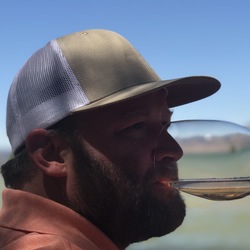





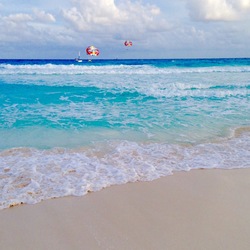


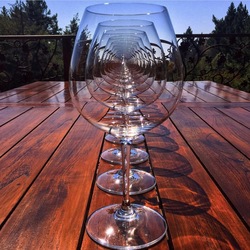

Michael Woodsmall
Really enjoyed it on the rocks. Also recommended by friend to mix one part vodka with two parts silver tequila, grapefruit juice and club soda over ice for a refreshing take on a Paloma! — 6 years ago